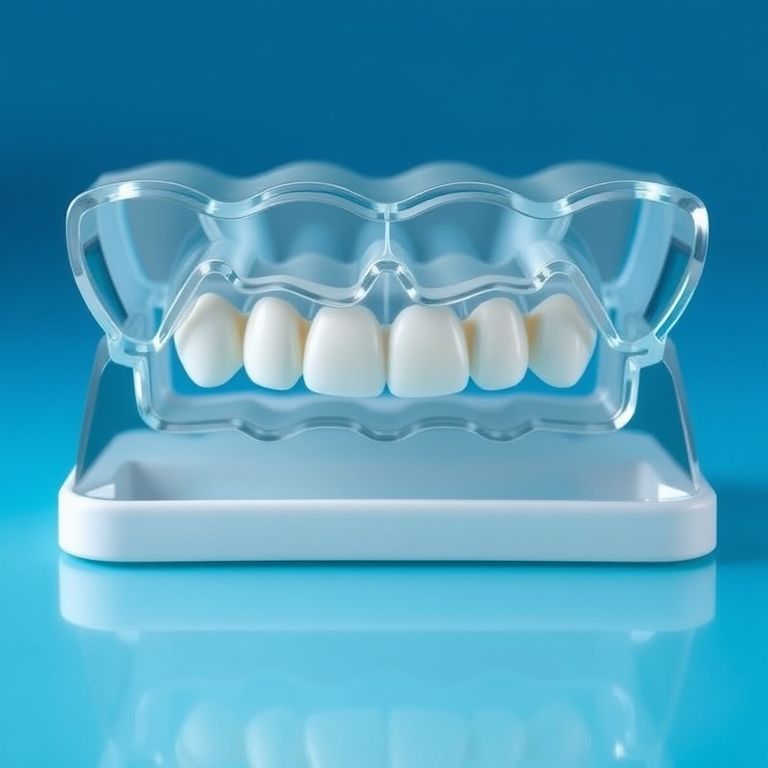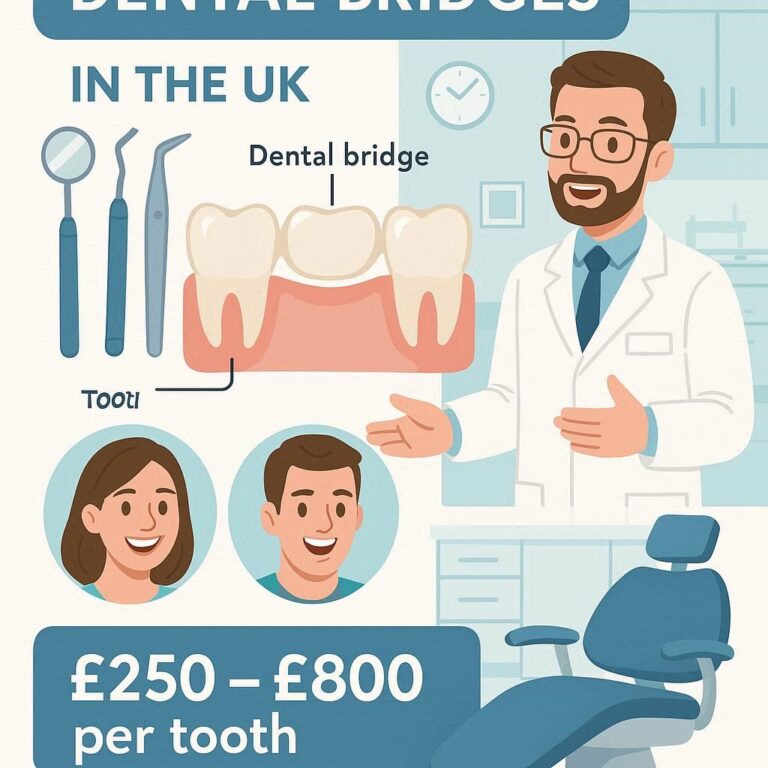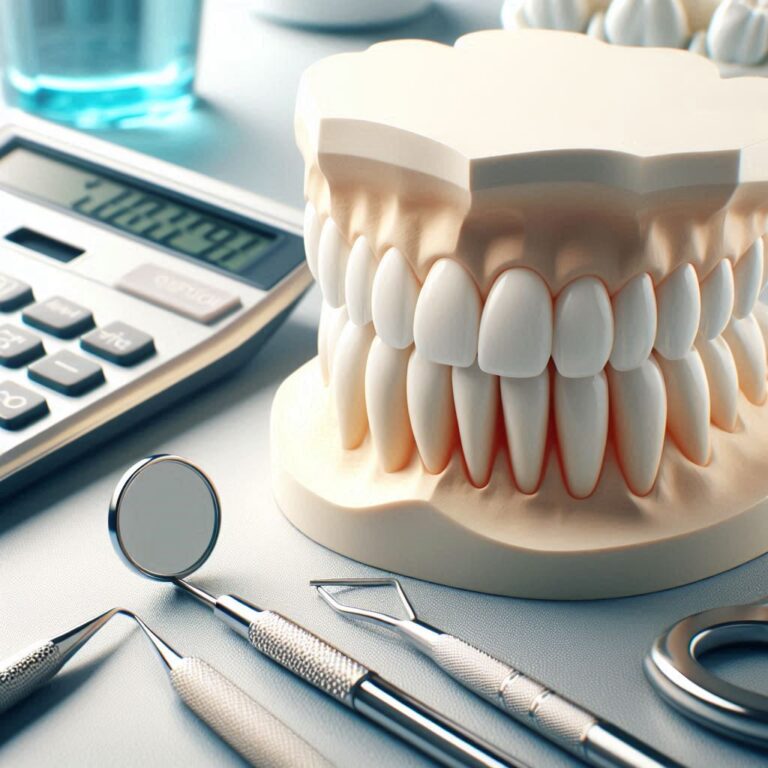The Ultimate Parent’s Guide to the Cost of Children’s Braces in the UK
- On
- InDENTAL BRIDGES
The moment you notice your child’s teeth beginning to crowd, protrude, or misalign is often the moment a silent, weighty question forms in every parent’s mind: “Will they need braces?” This question is swiftly followed by another, more daunting one: “And how on earth are we going to pay for them?” In the UK, the landscape of children’s orthodontics is a complex tapestry, woven with threads of public healthcare provision and a thriving private sector. The journey can feel like navigating a labyrinth, filled with unfamiliar acronyms like IOTN, confusing cost disparities, and the pressure of making a decision that will impact your child’s health, confidence, and your family’s finances for years to come.
This article is your definitive map through that labyrinth. We will move beyond simplistic price lists and delve into the very heart of what determines the cost of braces for your child. We will demystify the strict eligibility criteria of the NHS, explore the premium world of private orthodontics with its cutting-edge options, and provide you with the tools to make a fully informed decision. This is not just a story about straightening teeth; it’s a guide to understanding a significant investment in your child’s long-term physical and psychological well-being. A confident smile is priceless, but understanding its cost is empowering. Let’s begin.

Table of Contents
Toggle2. Understanding the ‘Why’: The Medical Necessity of Orthodontics for Children
The perception of braces as a purely cosmetic indulgence is one of the most persistent and damaging myths in dental care. While the aesthetic benefits are undeniable and profoundly impactful on a child’s self-esteem, the primary goal of orthodontic treatment is to establish optimal oral health and function.
Correcting a malocclusion (the technical term for a misaligned bite) is a medical necessity for several reasons:
-
Improved Oral Hygiene: Crooked and crowded teeth are notoriously difficult to clean. Floss struggles to reach tight spaces, and toothbrush bristles miss overlapping surfaces. This creates plaque traps, significantly increasing the risk of tooth decay, gum disease, and permanent enamel damage.
-
Prevention of Excessive Wear: A misaligned bite, such as an overbite or underbite, causes certain teeth to bear the brunt of chewing forces. Over time, this leads to premature, uneven wear, chipping, and even cracking of the enamel.
-
Jaw Joint Health: Problems with the temporomandibular joint (TMJ) can be linked to a poor bite. Symptoms can include chronic jaw pain, headaches, clicking or locking of the jaw, and even earaches.
-
Speech and Chewing Function: Severe malocclusions can impede a child’s ability to chew food properly, affecting nutrition, and can contribute to speech impediments like lisps.
-
Prevention of Trauma: Protruding front teeth (a common Class II malocclusion) are far more susceptible to injury and fracture in the event of a fall or impact.
By addressing these issues during childhood, when the jaw is still growing and malleable, orthodontists can guide development, create space for permanent teeth, and achieve results that would be far more complex, invasive, and costly to achieve in adulthood.
3. The Two-Tier System: An Overview of NHS vs. Private Orthodontic Care in the UK
The UK’s dental care system presents parents with two distinct pathways for orthodontic treatment: the National Health Service (NHS) and private care. Understanding the fundamental differences between them is the first critical step.
NHS Orthodontics:
-
Philosophy: To provide medically necessary treatment based on clinical need, not cosmetic desire.
-
Funding: Subsidised by the government. Patients contribute a fixed patient charge, but the true cost of treatment (often thousands of pounds) is heavily subsidised by public funds.
-
Access: Not universal. Access is strictly rationed based on the severity of the orthodontic problem, assessed using the Index of Orthodontic Treatment Need (IOTN).
-
Choice: Limited. The treatment plan is focused on achieving functional health in the most cost-effective way, which typically means traditional fixed metal braces. You cannot choose your consultant or the type of appliance used for NHS reasons.
Private Orthodontics:
-
Philosophy: To provide a bespoke service based on patient and parent choice, encompassing both health and aesthetic goals.
-
Funding: Fully funded by the patient/parents. There are no subsidies.
-
Access: Universal. Any child can be seen privately, regardless of the severity of their malocclusion. This includes mild cases that would not qualify for NHS care.
-
Choice: Extensive. Parents and patients can choose the orthodontist, the type of braces (e.g., ceramic, lingual, clear aligners), appointment times, and the overall depth of the treatment plan, which may include finer aesthetic detailing.
The choice between these two paths is not merely financial; it’s a choice between a needs-based system and a wants-based system.
4. Navigating the NHS Pathway: Eligibility, Cost, and the Journey
For families who qualify, the NHS pathway offers a way to access essential orthodontic care at a fraction of the private market rate. However, the journey is governed by strict protocols.
4.1. The IOTN: The Gateway to NHS Funding
The Index of Orthodontic Treatment Need (IOTN) is the objective scoring system used to determine eligibility. It consists of two components:
-
Dental Health Component (DHC): This is the most important part. It grades malocclusion from 1 (no need for treatment) to 5 (very great need) based on the specific traits that affect dental health, such as overjet (protrusion), crossbites, and impacted teeth.
-
Grade 5 & 4: Almost always accepted for NHS treatment.
-
Grade 3: A borderline category. Acceptance depends on local funding and the Aesthetic Component.
-
Grade 2 & 1: Not accepted for NHS treatment.
-
-
Aesthetic Component (AC): This is a scale of 10 photographs representing different levels of dental attractiveness, scored by the orthodontist. It is usually only used to help decide on borderline DHC Grade 3 cases.
The reality is stark: only children with the most severe orthodontic problems (typically the top 25-30%) will qualify for NHS treatment. A mildly crooked smile, regardless of how much it bothers the child, will not meet the threshold.
4.2. The NHS Treatment Journey: From Referral to Retention
The journey typically follows these steps:
-
GDP Referral: Your General Dental Practitioner (GDP) identifies a potential issue and refers your child to an NHS orthodontist for an assessment.
-
Assessment Appointment: The orthodontist conducts a thorough examination, takes X-rays and photographs, and scores the IOTN.
-
The Verdict: You are informed whether your child qualifies for NHS treatment. If they do not, you will be given the option to seek private treatment.
-
Treatment: If accepted, your child will be placed on a waiting list (which can vary from a few months to over a year in some areas). Treatment almost always involves traditional metal braces.
-
NHS Patient Charge: The current cost for a full course of NHS orthodontic treatment in England is £282.80. This is banded, meaning you pay this set fee regardless of the complexity or duration of treatment (which can last 18-24 months). This fee is often payable in installments. Note: Costs are different in Scotland, Wales, and Northern Ireland, and may be lower or free in certain circumstances.
-
Retention: After the braces are removed, the retention phase begins. The cost of retainers is usually included in the initial NHS charge.
4.3. The NHS Cost Structure: What You Actually Pay
It is crucial to understand that the £282.80 is a patient contribution, not the true cost. The NHS contract pays the orthodontist a separate fee to cover the rest of the treatment’s expense, which can be several thousand pounds. This is why the eligibility criteria are so stringent—public funds are being allocated only to the most severe cases.
5. The Private Orthodontic Route: Choice, Flexibility, and Premium Cost
The private route is chosen by families whose children do not qualify for the NHS, those who are on long waiting lists, or those who desire more choice, faster treatment, and less visible appliances.
5.1. The Spectrum of Private Braces: From Traditional to High-Tech
This is where the private market shines, offering a range of solutions to suit every aesthetic preference and clinical requirement.
-
Traditional Metal Braces: The “train tracks.” Modern versions are smaller, more comfortable, and more efficient than ever. They are the most robust and cost-effective option in the private sector.
-
Ceramic (Tooth-Coloured) Braces: Function identically to metal braces but use clear or tooth-coloured brackets and sometimes white wires. They are far less noticeable but can be more fragile and slightly more expensive.
-
Lingual Braces: These are custom-made metal braces that are fixed to the back (lingual surface) of the teeth, making them completely invisible from the front. They are the most expensive fixed appliance option and require a high level of skill to fit and manage.
-
Clear Aligners (e.g., Invisalign First/Teen, Spark): A series of removable, virtually invisible plastic trays that gradually move the teeth. They are popular with teenagers for their aesthetics and removability (for eating and brushing). However, they require a high level of patient compliance to be effective.
5.2. The Private Treatment Experience: A Deep Dive
Beyond the choice of appliance, the private experience differs significantly:
-
Consultation: Often more in-depth, with more time spent discussing goals and options, and frequently including 3D digital scans instead of messy impressions.
-
Treatment Planning: The plan can be more comprehensive, potentially including “fine-tuning” for a perfect aesthetic result that may fall outside strict NHS clinical needs.
-
Appointment Flexibility: Evening and weekend appointments are more readily available.
-
Technology: Private practices are more likely to invest in the latest digital technology for planning, monitoring, and customising treatment.
-
Communication: Direct access to your chosen orthodontist is standard.
6. Deconstructing the Cost: A Detailed Table of Private Brace Types and Prices
The cost of private treatment is not a single figure. It is influenced by the complexity of the case, the orthodontist’s experience and location (London and the South East are typically more expensive), and the type of braces chosen. The following table provides a realistic range for full comprehensive treatment for a child or teenager in the UK.
Estimated Cost Ranges for Private Children’s Braces in the UK (2025)
| Type of Braces | Typical Cost Range | Key Features | Pros | Cons |
|---|---|---|---|---|
| Traditional Metal Braces | £2,000 – £4,500 | Metal brackets and wires. | Most cost-effective, highly efficient & robust, suitable for all cases. | Most noticeable option. |
| Ceramic Braces | £3,000 – £5,500 | Tooth-coloured or clear brackets. | More aesthetically pleasing than metal, same efficiency. | More expensive than metal, can stain, slightly more bulky. |
| Lingual Braces | £5,000 – £8,000+ | Custom-made braces behind teeth. | Completely invisible from the front. | Most expensive, can initially affect speech, not suitable for all cases. |
| Clear Aligners (e.g., Invisalign) | £3,000 – £6,000 | Series of removable clear trays. | Nearly invisible, removable, comfortable. | Requires high patient compliance, not suitable for very complex cases. |
Important Note: These costs are almost always “all-inclusive,” covering all appointments, the braces themselves, fittings, adjustments, and the first set of retainers. Always confirm what is included in the quoted price.
7. The Hidden Costs of Braces: What Many Parents Don’t Budget For
The initial quote is just the beginning. Responsible financial planning for braces must account for these potential additional costs:
-
Pre-Treatment Costs: Your child may need extractions (£100-£300 per tooth) or other preparatory work carried out by your GDP, which is not included in the orthodontist’s fee.
-
Broken Appointments and Repairs: Most contracts include a clause for charges related to frequently missed appointments or repairs needed due to carelessness (e.g., breaking brackets by eating forbidden foods).
-
Oral Hygiene Supplies: Children with braces need specialized tools: orthodontic toothbrushes, interdental brushes, water flossers, and fluoride mouthwash. This is an ongoing, recurring cost.
-
Retainers and Retention: This is the most critical, often overlooked cost. Once the braces come off, retainers are for life. The initial set may be included, but they wear out, get lost, or break. Replacement retainers can cost £100-£400 per set. This is a long-term financial commitment.
-
Dental Insurance Premiums: If you take out a dental plan to cover the cost, the monthly premiums are an additional cost.
8. Financing the Smile: Payment Plans, Dental Insurance, and HSAs
Faced with a bill of several thousand pounds, most families need a financial strategy. Fortunately, options are available:
-
In-House Payment Plans: The vast majority of private orthodontists offer interest-free or low-interest payment plans. This allows you to spread the cost over the duration of the treatment (e.g., 24 months), making it a manageable monthly outgoing (£100-£250 per month is common).
-
Dental Insurance/Health Cash Plans: Some insurance policies have an orthodontic allowance, but it is vital to read the small print. These are often capped (e.g., £1,000 lifetime maximum) and may only cover a portion of the total fee. They are more useful for mitigating the cost rather than covering it entirely.
-
Savings and Health Savings Accounts: Using existing savings or contributing regularly to a dedicated savings account is a straightforward way to fund treatment without incurring debt.
-
Credit Options: As a last resort, some may use a bank loan or a 0% purchase credit card, but caution is advised due to potential high interest rates.
9. Choosing the Right Path: A Step-by-Step Decision Matrix for Parents
Feeling overwhelmed? This logical flow chart can help guide your decision-making process.
10. The Orthodontist Consultation: Key Questions to Ask and Red Flags to Spot
Whether NHS or private, the consultation is your opportunity to become an informed partner in your child’s care. Come prepared with questions.
Essential Questions to Ask:
-
What is the specific diagnosis and what is the proposed treatment plan?
-
What are the goals of treatment? (Functional and aesthetic.)
-
What type of braces do you recommend and why?
-
What is the total, all-inclusive cost? What is not included?
-
What payment plans do you offer?
-
What is the estimated treatment time?
-
How often will adjustment appointments be?
-
What are the risks and potential complications?
-
What is your policy on broken appliances and missed appointments?
-
Can you show me before-and-after photos of similar cases you have treated?
Potential Red Flags:
-
A consultant who pressures you to sign a contract immediately.
-
Unwillingness to discuss costs and payment options transparently.
-
A quote that seems significantly lower than all others—ask what is being compromised.
-
No mention of the long-term need for retainers.
11. Case Studies: Real-World Scenarios and Cost Breakdowns
Case Study 1: The NHS Patient
-
Patient: Sophie, age 12.
-
Issue: Severe overjet (protruding front teeth) with a deep bite. IOTN DHC Grade 5.
-
Pathway: Qualified for NHS treatment. Waited 6 months for a start date.
-
Treatment: Upper and lower fixed metal braces for 22 months.
-
Cost: £282.80 in installments to the NHS. All adjustments and first retainers included.
Case Study 2: The Private Patient (Mild Crowding)
-
Patient: Liam, age 14.
-
Issue: Mild to moderate crowding, IOTN DHC Grade 3. Did not qualify for NHS.
-
Pathway: Private treatment. Parents chose ceramic braces for a better aesthetic.
-
Treatment: Comprehensive treatment with ceramic braces for 18 months.
-
Cost: £4,200. Funded via an interest-free payment plan of £233 per month for 18 months.
Case Study 3: The Private Patient (Aesthetic Focus)
-
Patient: Chloe, age 16.
-
Issue: Mild spacing and desired aesthetic improvement. IOTN DHC Grade 2.
-
Pathway: Private only. Wanted the most discreet option.
-
Treatment: Invisalign clear aligners for 12 months.
-
Cost: £4,800. Paid upfront, receiving a 5% discount. Includes Vivera retainers.
12. Conclusion: The Priceless Return on Investment
Navigating the cost of children’s braces in the UK requires understanding a dual-track system, where eligibility for public funding is strict and private care offers choice at a premium. The investment, whether the set NHS charge or a private fee of several thousand pounds, is substantial, but it is an investment in a lifetime of improved oral health, function, and self-confidence. By conducting thorough research, asking the right questions, and leveraging available payment options, you can transform this financial challenge into one of the most valuable gifts you can give your child: the foundation for a healthy, confident smile.
13. Frequently Asked Questions (FAQs)
Q1: At what age should my child first see an orthodontist?
A: The British Orthodontic Society recommends an assessment around age 7-9. This doesn’t mean treatment will start immediately, but it allows the orthodontist to identify developing problems and plan for future intervention at the optimal time.
Q2: Can I mix NHS and private treatment?
A: Generally, no. You cannot pay privately to “upgrade” your braces (e.g., from metal to ceramic) on an NHS treatment plan. The pathways are separate. However, you might have pre-treatment extractions done on the NHS through your GDP while the orthodontics itself is private.
Q3: What happens if we move house during treatment?
A: This can be complicated. For NHS care, you will need to transfer to a new NHS orthodontist in your new area, which may involve re-applying and could face waiting lists. For private care, you would need to find a new orthodontist willing to take on a mid-treatment case, which may involve transfer fees and a new contract. Always discuss this with your current orthodontist well in advance.
Q4: Are there any circumstances where NHS orthodontic treatment is free?
A: Yes. In England, if the child (or the parent receiving qualifying benefits) is under 18 and is eligible for, for example, the NHS Low Income Scheme, the patient charge may be waived. In Wales, all NHS dental treatment for under 25s is free, including orthodontics. Rules differ in Scotland and Northern Ireland.
Q5: How do I find a good orthodontist?
A: Start with a referral from your family dentist. You can also use the “Find a Specialist” function on the General Dental Council (GDC) website and the British Orthodontic Society (BOS) website. Look for practitioners who are “Specialists in Orthodontics” and are members of the BOS.
14. Additional Resources
-
British Orthodontic Society (BOS): www.bos.org.uk – An invaluable resource for parents and patients, with information on treatment types, finding a specialist, and patient stories.
-
NHS Choices: Orthodontics: www.nhs.uk/conditions/braces-and-orthodontics/ – Official NHS information on the process and costs.
-
General Dental Council (GDC): www.gdc-uk.org – The regulatory body for dental professionals in the UK. Use their register to check an orthodontist’s registration and specialist status.
-
Citizens Advice: www.citizensadvice.org.uk – For help and advice on claiming help with NHS health costs through the Low Income Scheme.
Date: October 7, 2025
Author: The Family Dental Health Advisory
Disclaimer: The information provided in this article is for informational purposes only and does not constitute medical or financial advice. The cost of orthodontic treatment can vary significantly based on individual circumstances, geographical location, and clinic pricing policies. Always consult with a registered orthodontist for a formal diagnosis and treatment plan, and seek independent financial advice if needed.
dentalecostsmile
Newsletter Updates
Enter your email address below and subscribe to our newsletter


